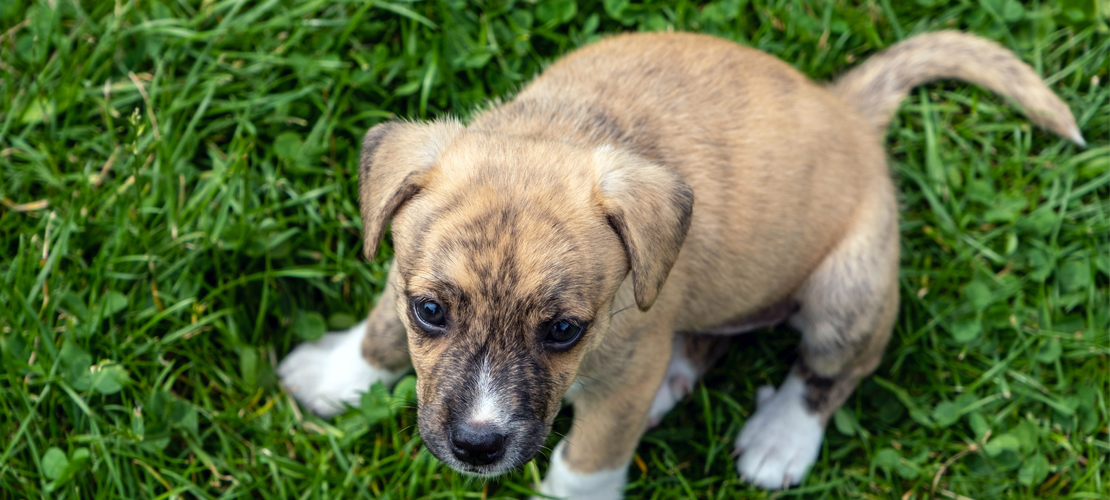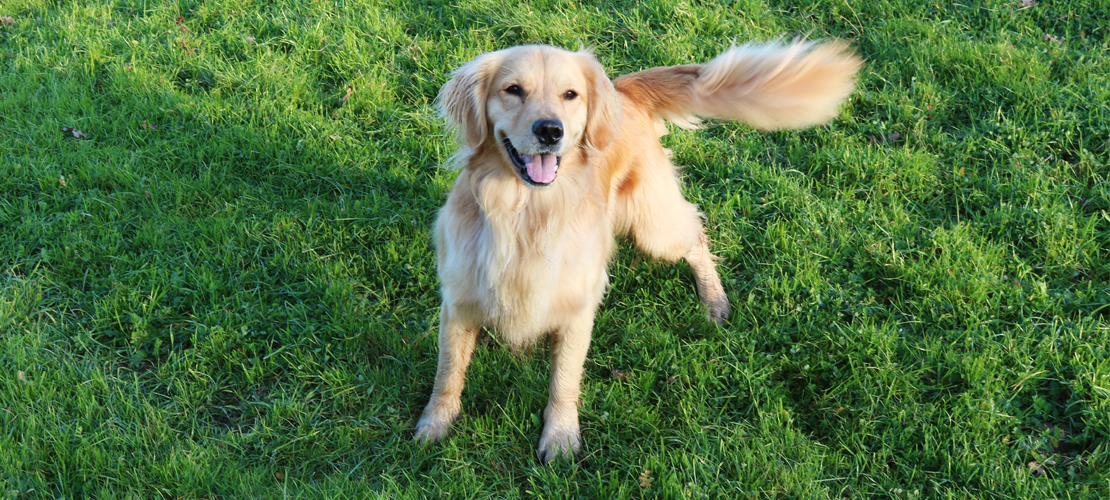Everyone knows that a wagging tail means a happy pooch, right? Actually, dogs wag their tails to express a range of emotions, and wagging can mean anything from anxiety to joy.
Along with body language, the tail is how dogs communicate how they’re feeling to us and other animals. Let’s take a look at what it means when your dog wags their tail and how to tell what they’re feeling.
What does tail wagging mean?
Dogs are emotional animals and they feel lots of different emotions. This is one of the main reasons why we form such strong bonds with our four-legged friends.
When you see a dog wag their tail, you might assume that this means they are feeling happy, although sometimes this isn’t the case. When a dog wags their tail, they could be conveying a number of different emotions. They might be feeling happy or excited, or they could be feeling nervous, threatened or anxious.
Unfortunately, our pooches can’t talk to us to let us know how they’re feeling, so they use their tail movements to give us clues about their emotions. The positioning and speed of their tail movements, combined with their body language, helps to give an idea about how they are feeling.
If your dog is feeling excited or happy, their tails will wag back and forth enthusiastically, or round and round in a ‘helicopter’ motion. Your dog will likely do this if you’ve been away from them for a short period of time, for example, if you’re returning from holiday, or even just from work. This tail movement is your dog telling you that they missed you and they are really happy to see you again.
 Some dogs move their whole body when they wag their tails, again this is generally a sign that they are happy and pleased to see you. This full-body movement can also mean that a dog is unsure about a situation and they are attempting to communicate that they aren’t a threat.
Some dogs move their whole body when they wag their tails, again this is generally a sign that they are happy and pleased to see you. This full-body movement can also mean that a dog is unsure about a situation and they are attempting to communicate that they aren’t a threat.
If your dog's tail is relaxed and sitting in a natural position, this means that they are feeling calm and stress-free.
If your dog’s tail is tucked between their legs it’s normally a sign that your dog or frightened or worried. The tail may still wag in this position, but in this case it is not a happy wag! A stiff tail normally means that the dog is contemplating an aggressive reaction.
How can I tell if my dog is worried?
If your dog is feeling scared or worried, their tail position won’t be the only way that they’ll let you know. Their body language and expressions will give you an insight into their emotional state.
They might start to lick their lips or yawn, or they might act aggressively or defensively by growling or flashing their teeth. Keep an eye out for these physical and emotional responses when your dog encounters something they are unsure about.
If your dog starts to display any of these defensive behaviors, calmly remove them from the situation so they’ve plenty of time and space to relax. By being alert and paying attention to your dog’s emotions, you can help to keep them happy, calm and safe.

What does the direction of the wag mean?
Research has shown that dogs wag their tail either left or right to convey how they are feeling. Although it may sound a bit far-fetched, the research shows that dogs wag their tail to the left to show negative emotions, and to the right to show positive emotions.
Why tail docking is a problem
Whether your dog has a short curly tail one or a long, swooping one, a dog’s tail is vital to help them communicate. When a dog’s tail is docked, they lose the ability to effectively communicate through it, which as previously mentioned, is a vital method of conveying emotion.
Docking a dog’s tail is illegal in the UK. Not only is it a painful and unnecessary procedure that hampers their ability to communicate, but it can also affect their balance and their ability to swim effectively.
Need more info?
Looking for further help and advice on your dog’s behaviour? Contact us to find out more about your dog’s behaviour.